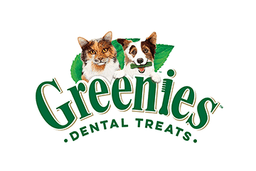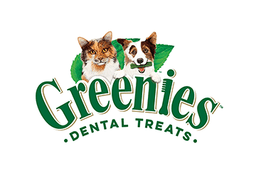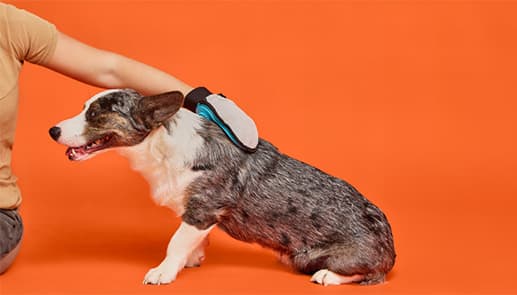Cats and dogs typically shed more as the weather warms up, preparing for the hotter months by getting rid of their thick winter coats. Let’s dive into why shedding happens seasonally, how long it lasts, and what you can do to manage it effectively.
When Do Dogs & Cats Shed More?
Shedding is your pet’s natural way of staying comfy all year long. During winter, cats and dogs grow thick, fluffy coats to stay warm, but when spring rolls around, they shed that extra layer to beat the heat. It might feel like a never-ending battle with fur, but it’s all part of keeping your pet healthy and happy.
Pets that spend time both indoors and outdoors tend to shed more in response to longer daylight hours, while indoor pets usually shed a little more consistently, though spring still brings a noticeable fur explosion.
Autumn can also trigger shedding in pets as they transition from their summer coats to thicker winter ones.
How Long Do Dogs Shed For?
Dogs tend to shed their winter coats over several weeks as the weather warms up. For some breeds, like Siberian Huskies or Golden Retrievers, it can feel like an endless fur storm, lasting up to two months! Double-coated breeds are the biggest shedders, as they lose their dense undercoat, while single-coated dogs, like Greyhounds, keep things a bit more low-key in the shedding department. No matter the breed, most dogs experience their heaviest shedding in spring, with another lighter shed in autumn.
How Long Do Cats Shed For?
Indoor cats tend to shed more consistently, with just a slight uptick in spring or autumn. But don’t let that fool you—sometimes it can feel like they’re always leaving fur behind. Cats that spend time both indoors and outdoors have a more obvious shedding season. They’ll go through a heavier shed in spring to lose their winter coat, and again in autumn to prep for cooler weather. Shedding usually lasts anywhere from 3 to 8 weeks, depending on your cat’s routine and coat
Ways to Manage Excess Shedding
If your home is starting to look like it’s carpeted with fur—and maybe you’re sneezing more than usual—it’s not just the fur that’s increasing. During spring shedding, your pet’s skin also produces more dander (tiny flakes of dead skin), which can trigger allergies or irritation for both you and your pet.
Here are a few simple strategies to help reduce excess fur and dander:
Brush Regularly with the Right Tools
Both cats and dogs benefit from regular brushing during shedding season, especially if they have long or thick coats. For dogs, aim for daily brushing. While cats are generally good at grooming themselves, brushing can help reduce the fur tumbleweeds floating around your home.
Choosing the Right Brush for Your Dog and Cat
Different coat types need specific tools, especially during shedding season. Some brushes work well for both dogs and cats:
- De-Matting Tool: Ideal for tackling tough mats and tangles, great for curly-coated dogs like Poodles and long-haired cats.
- Silicone Brush: This flexible brush is perfect for daily use on both dogs and cats of most coat types, removing dead hair while massaging the skin.
- Grooming Glove: Gentle on sensitive skin, this is great for short to medium coats in both cats and dogs, and perfect for nervous pets.
- Slicker Brush: Excellent for removing loose fur and preventing mats, suitable for long, dense coats in both cats and dogs.
- Furminator Deshedding Tool: Available for both long-haired and short-haired dogs and cats, this tool effectively removes loose undercoat fur with stainless steel teeth, perfect for heavy shedders.
- Grooming Comb: Great for medium to long-haired cats and dogs, it helps with daily detangling and smooths out the coat.
- Shedding Rake & Blade: Ideal for both cats and dogs, this tool helps remove loose fur from the undercoat and is especially useful during heavy shedding seasons.
Use the Right Shampoo
Using the right shampoo during shedding season can help remove loose fur, soothe the skin, and keep your pet's coat healthy. Look for shampoos that are gentle, designed for shedding control, or cater to your pet's skin type. However, be careful not to over-bathe your cat or dog, as frequent washing can dry out their skin and lead to irritation
Maintain a Healthy Diet
Omega-3 fatty acids are fantastic for keeping your pet’s coat healthy and shiny and a well-balanced diet can also help reduce dander. There are plenty of foods, supplements, and treats that support shedding control and promote overall skin and coat health.
Spring Grooming Checklist for Cats and Dogs
Regular grooming is key to keeping your pet’s coat in top shape. Here’s a handy checklist to help you stay on top of things this spring:
- Bath with pet-friendly shampoo
- Trim nails
- Check ears and eyes; clean as needed
- Brush frequently
- Check for fleas and ticks

Spring Care for Dogs
Top Breeds That Shed a Lot (and a Little)
Some cat and dog breeds shed more than others, so knowing what to expect can help you prepare:
High Shedders:
- Golden Retriever
- Siberian Husky
- German Shepherd
- Alaskan Malamute
- Ragdoll Cat
- Labrador Retriever
- Corgi
- Border Collie
- Maine Coon Cat
- Australian Shepherd
Low Shedders:
- Poodle
- Bichon Frise
- Sphynx Cat
- Schnauzer
- Devon Rex
- Cavoodle
- Shih Tzu
- Maltese
- Russian Blue Cat
- Burmese Cat
Just because a breed is low-shedding doesn’t mean they’re low-maintenance! Many low-shedding dogs and cats require regular grooming to keep their coats or skin in top condition. Low shedding often means their fur or skin needs more hands-on care to stay healthy.
When to Be Concerned About Shedding
Excessive shedding can sometimes be caused by skin irritations or allergies, especially during spring. Keep an eye on your pet’s skin for signs like itching, redness, or unusual hair loss.
Stress and poor nutrition can also contribute to abnormal shedding, so it's important to monitor your pet’s overall health. Watch out for symptoms such as bald spots, thinning fur, or irritated skin.
If you notice any of these signs, it’s best to consult your vet to address any underlying issues.
With these tips in mind, you'll be ready to tackle spring shedding season with ease. And remember, shedding is a natural process that helps keep your pet comfortable as the weather changes—so embrace the fur, and enjoy the warmer days ahead!






























